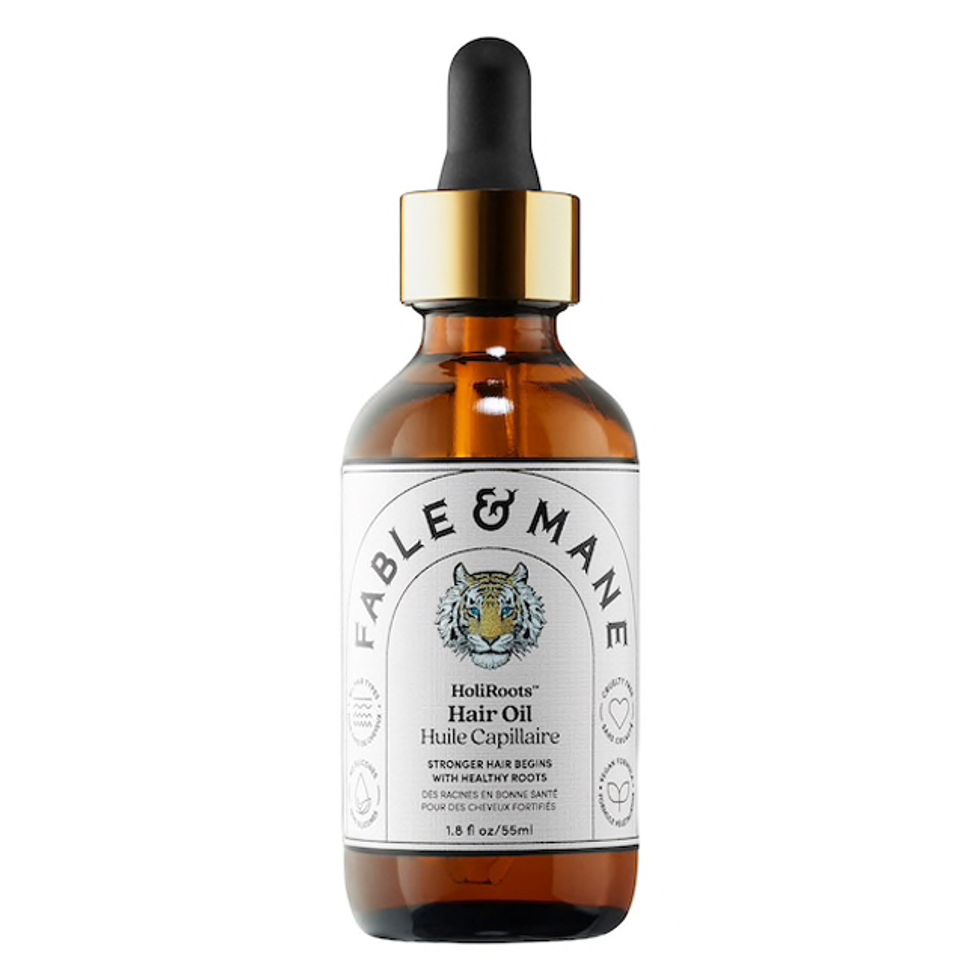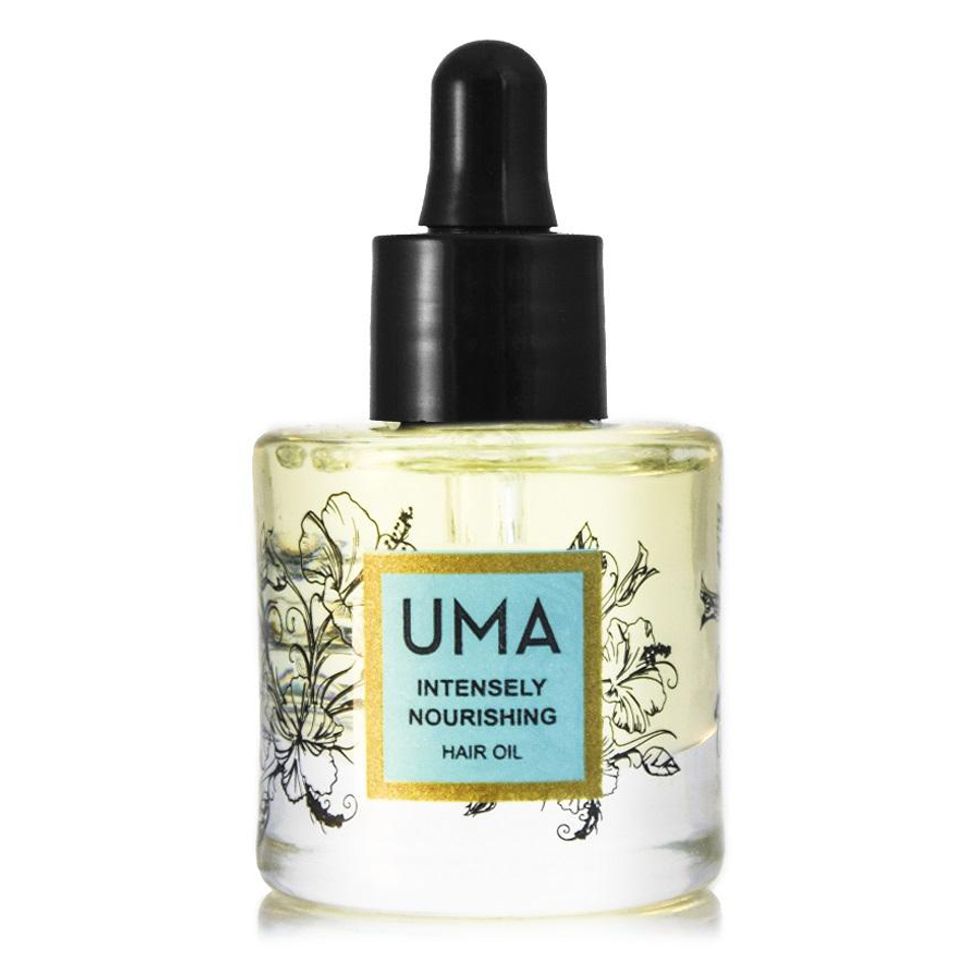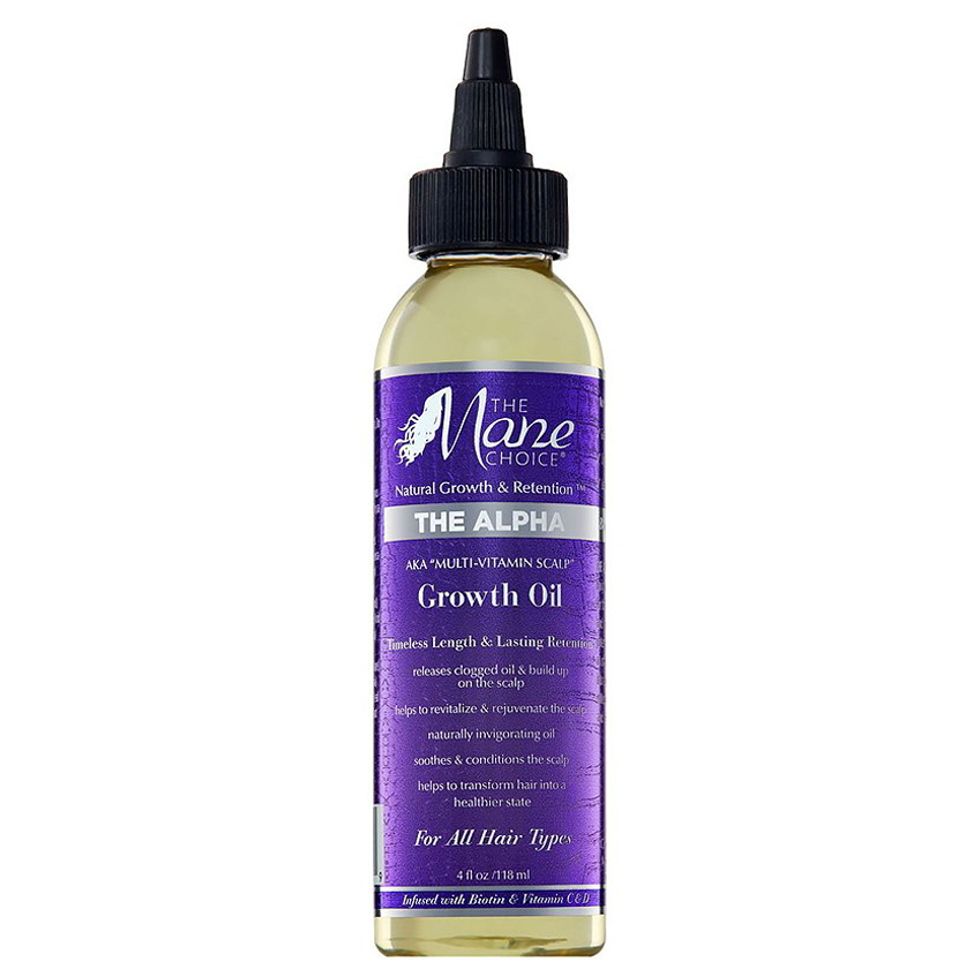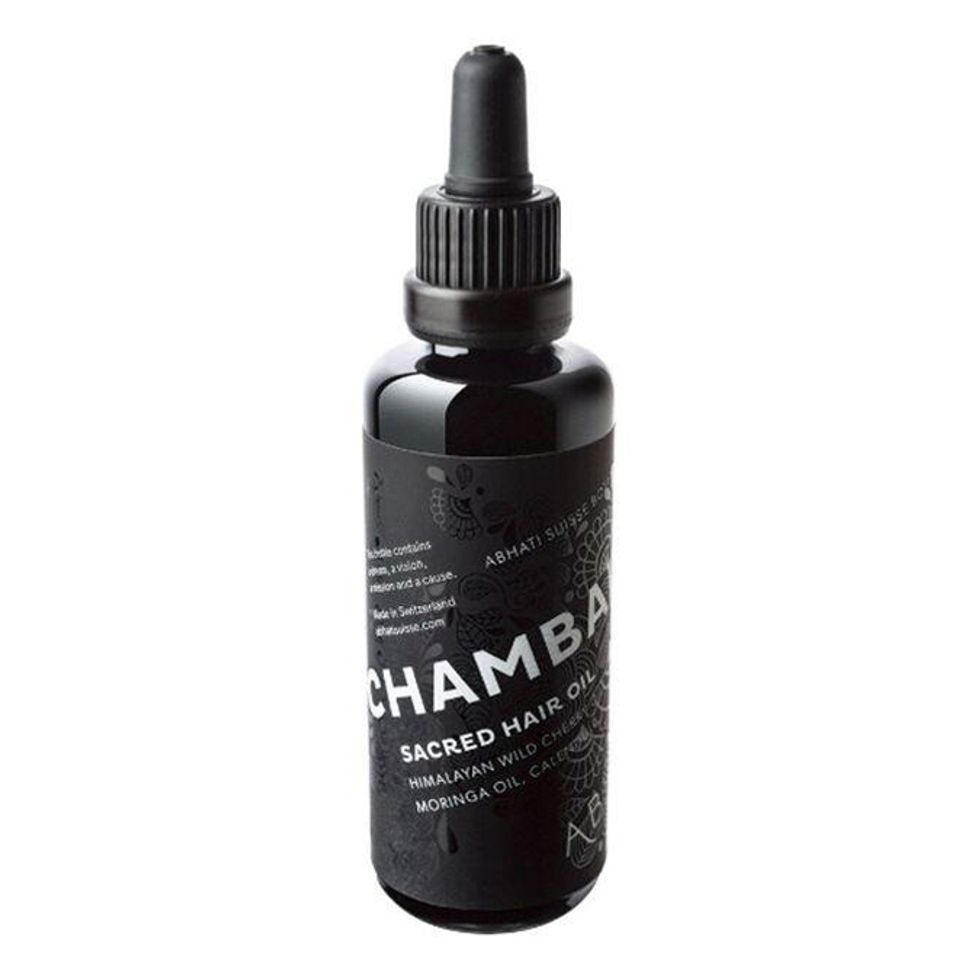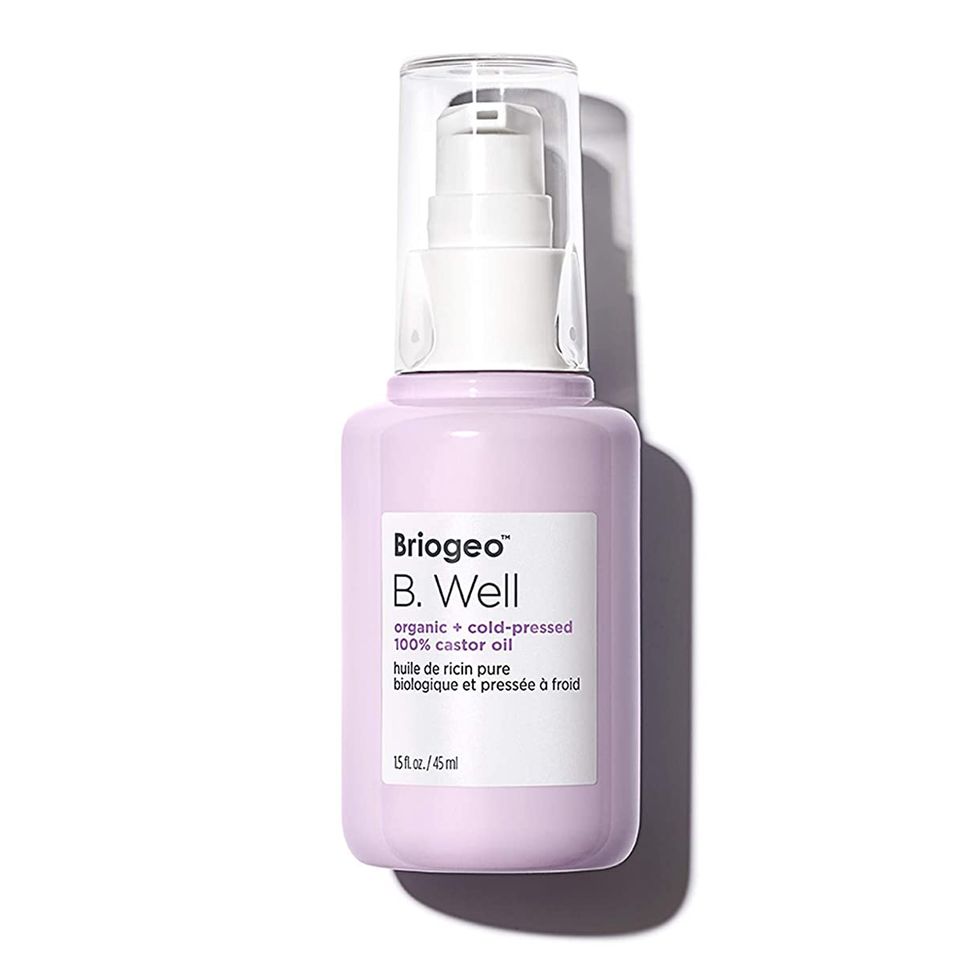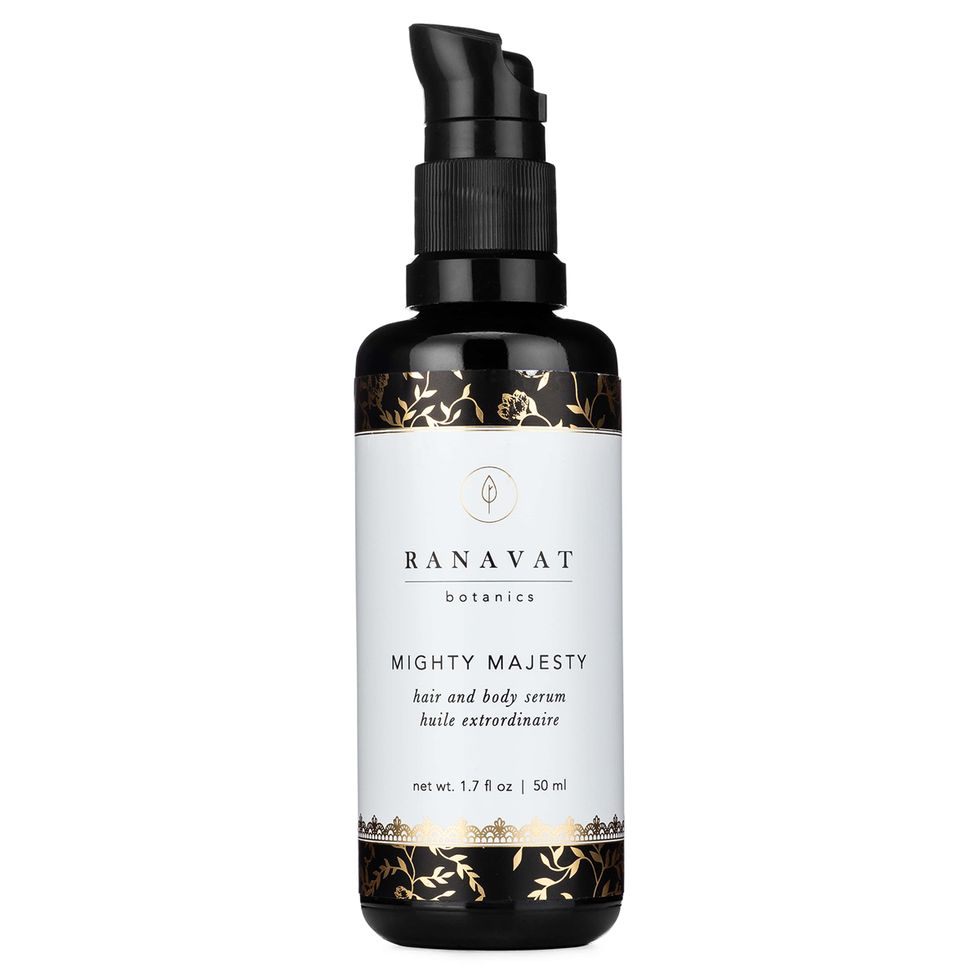Hair
Looking to Grow Your Hair Out? Try Hair Oiling
The ancient Ayurvedic hair treatment nourishes and strengthens like no other.
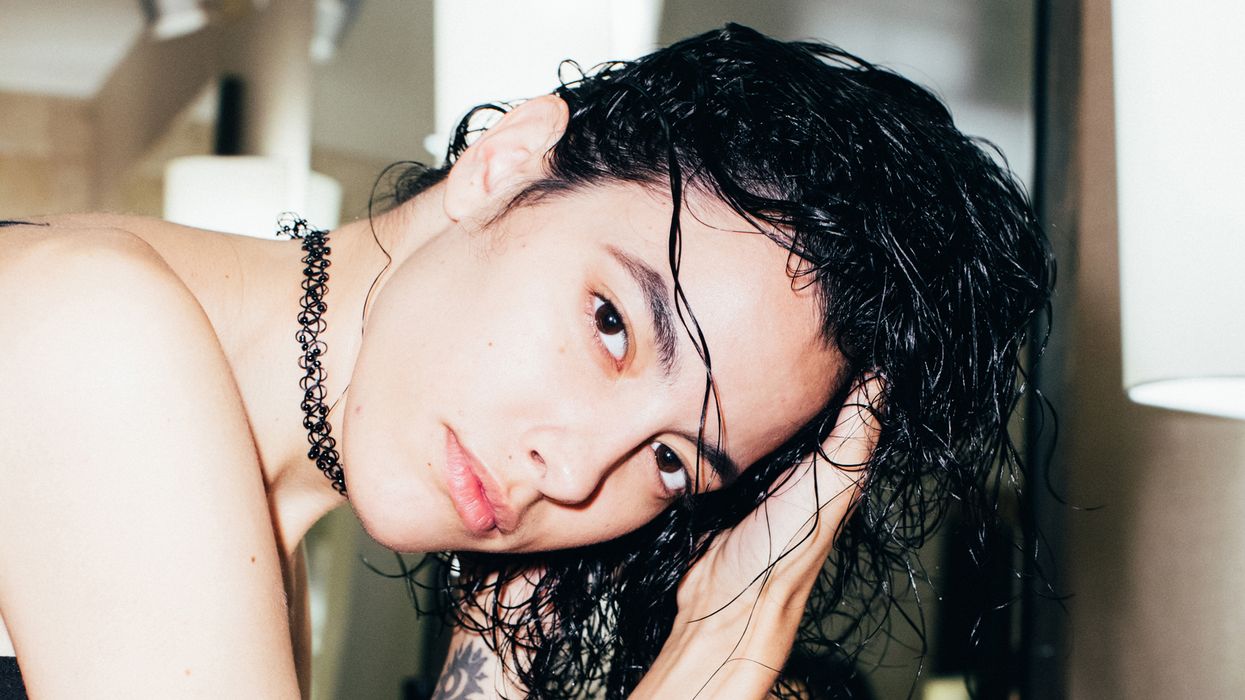
12 August, 2020
10 November, 2021
Sometime during the middle of quarantine, when the days began to blend into one, I decided that I wanted to grow out my bob and baby bangs (that now cover my eyebrows) all the way down to my butt (!!). After a failed attempt at trimming my own bangs and horrified at whatever my now lob-length ends were doing, I decided that I was going to do whatever it takes to grow my hair out as quickly as possible—more realistically, below my shoulders, by Labor Day.
Now, there’s no surefire way to grow your hair out overnight, but the healthier and stronger it is, the faster it will grow. In my research to find everything I could to speed up the process, I stumbled upon one of the most beneficial hair-care (and even more so, self-care) rituals of all: hair oiling.
Now, there’s no surefire way to grow your hair out overnight, but the healthier and stronger it is, the faster it will grow. In my research to find everything I could to speed up the process, I stumbled upon one of the most beneficial hair-care (and even more so, self-care) rituals of all: hair oiling.
The History of Hair Oiling
The ancient Ayurvedic practice—which is over 4,000 years old—entails massaging the hair with a specially made formula of oils and herbs, beginning with the scalp and extending down through the ends of the hair. “While it’s based in Ayurveda and used to promote healthy scalp and hair health, it’s deeply embedded in South Asian culture,” says Michelle Ranavat, founder of Ayurvedic beauty brand Ranavat Botanics. “While I grew up here in the US, I remember during my visits back to India my grandmother would always make me sit next to her while she would oil my hair. Looking back, it’s a common memory many of us have and is a bond formed between generations.”
While it’s a ritual typically shared amongst different generations of family members, it’s also one of the most common beauty treatments in Indian culture. “Indians are taught how important it is to protect our dark tresses through oiling, much like how we approach using SPF daily to protect against sun damage,” says Anju Rupal, founder of hair- and skin-care brand Abhati Suisse. “In the West, hair masks are done when we feel our hair is brittle and weak and our scalps are irritated. Indian women, however, never let this happen. The hair and scalp are cared for regularly to prevent damage.”
It’s been passed down for generations and remains popular in Indian culture for good reason—oiling reaps tons of hair benefits, especially if you’re looking to grow yours out. As Niki Mehta, co-founder of hair-care brand Fable & Mane, explains, hair oiling can improve hair health, including thickness, strength, and growth, and is even thought to help prevent hair loss and slow down the natural greying process. It can also be used on all hair types due to the interchangeability of the oils used.
Plus, the application process itself restores balance in the body and promotes a sense of calm. “Hair oiling is practiced with a head massage—saturating the scalp with the oil, gently kneading into the scalp in order to stimulate the follicles of the hair and encourage hair growth,” says Mehta. “A key focal point is the crown chakra, an energy point located on the top of the head which, when touched, helps release stress. The temples, hairline, and neck are also massaged to increase relaxation and stress relief.”
The 411 on Oils
So what’s in these oil concoctions that hold such powerful hair-transforming properties? As Ranavat explains, recipes typically consist of two parts that will differ from person to person, based on hair type and preference: first, a hair oil base, and second, herbs or herb-infused oils and extracts—all of which are natural and never processed. “Sesame, coconut, and sunflower oils are the most common, but I’ve seen almond used as well,” she says. “I tend to gravitate to lighter oils because I find my hair soaks them up more and they feel lighter and easier to keep in for longer.” However, others may find that heavier oils such as coconut, or a combination of multiple oils, work better for them, especially if you have thicker or drier hair.
In terms of herbs and infused oils and extracts, the possibilities are endless. “My favorite is amla (Indian gooseberry), because it helps with hair growth,” says Ravanat. “Jasmine is great because it’s mood-elevating and also anti-fungal, so it helps with dandruff. I also love hibiscus for thickening and brahmi for protecting the hair, as well.” A favorite of Rupal, which is found in her own products, is Himalayan wild cherry, which boasts a ton of scalp-boosting antioxidants.
Kiku Chaudhuri, co-founder of hair-care brand Shaz & Kiks, opts for fenugreek, black sesame seeds, and ginger, and sprinkles in a few drops of tea tree or rosemary essential oils right before applying. “If you’re experiencing super dry hair and scalp, put a little teaspoon of ghee into the mix,” she says.
Hair Oiling How-To
If you’re interested in trying hair oiling for yourself, you’ll first want to choose an oil base (or a combination of a few) that’s best for your hair type, being sure to find one that’s high-quality, organic, and cold-pressed. “You want to stay away from chemically extracted or overly refined oils because they just aren’t as potent,” says Ranavat. “You can either keep it simple and stop there, or infuse with your favorite herbs. You would add these ingredients to the oil and let it sit for about a week so that the oil takes on the properties of the herb.”
If you’re pressed for time (or impatient, like me), you can speed up this process by turning to your stove or microwave. Chaudhuri recommends taking your carrier oil or oil blend and heating it in a saucepan on low heat. Then add your herbs and let them simmer for five to 10 minutes in the oil before cooling off.
Before you begin applying the oil, you’ll want to comb and detangle your dry hair. “Traditionally, we use a wood comb because it causes the least amount of friction,” says Chaudhuri. “Flip your head down and comb from back to front, then flip your head up and comb from front to back. This starts blood circulation in your scalp, which is really important for it to absorb oxygen and the nutrients from the plant oils. It also makes sure to get any knots or snags out and dislodges any dry scalp flakes.”
Next, the oil is slightly heated up, either on the stove or in the sun, and applied and massaged in. Give yourself a much-deserved head massage and work the oil into your scalp and ends, then leave the treatment in your hair for anywhere from 30 minutes to overnight—the longer the better—to make sure you get the maximum benefit. Wrapping the hair in a hot towel while waiting (err, relaxing) can also help boost absorption.
When you’re ready to wash out, shampoo and condition hair as you would normally, but try to avoid any products with sulfates (which you should avoid regardless). How often you oil your hair depends on your hair type and damage levels, as well as how often you wash it. Once or twice a week is typically a good place to start. “Being consistent but not excessive is key to sustaining the balance of nutrients in the hair,” says Mehta.
While you’ll notice an instant boost in hydration and smoothness after shampooing and conditioning, it will take time for the real magic to work. “Try to stick to the ritual for at least three months,” says Rupal. “You’ll see beautiful benefits for both scalp and hair structure. Your hair also needs to adjust to purely natural ingredients, because herbal formulas without foaming agents, et cetera, are relatively new in mainstream Western beauty. Indian women have been using cold-pressed vegetable oils for decades (or even centuries), and the benefits are just now slowly coming to the West.”
Personally, since I added oiling to my weekly routine about a month ago, my hair is noticeably shinier and less frizzy, and my scalp is now completely flake-free. My hair typically takes forever to grow, but I’ve noticed my bangs growing out quicker than normal, which is the area I tend to focus the majority of my scalp massage. Overall, my hair feels much healthier, and I’m looking forward to seeing the results after keeping up with it for a few months.
For those of you looking to add hair oiling to your self-care regimen without having to put in the work of making your own, there are plenty of ready-to-apply hair oiling and hair-oiling-inspired treatments to shop online—just remember, the cleaner the formula, the better. Below, check out some of our favorites to fully nourish and pamper your strands and even help them grow.

